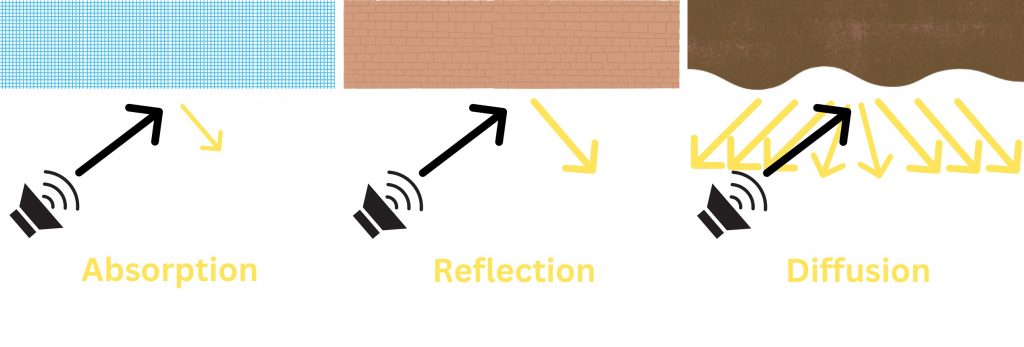What is Acoustics Design – Architect’s Edition.
When it comes to designing a building, architectural acoustics is not the first thing to come into mind, but that doesn’t make it more important. Architects usually prioritize mechanical works, water works, electrical works, fire equipment and then comes interior design and furnishings. More often than not, people will only begin to notice sound issues when the furnishings start to go in, and the space gets occupied. That is why most soundproofing solutions comes after the fact. When you look for soundproofing options after a space is done, the results are often not the most pretty.
Nevertheless, you should know that soundproofing and acoustics does not affect the whole outlook of a space. Isolator walls look no different than normal walls, but they give great impact. Another example is the bricks that are used to build the building. In these days, buildings are built to skyscraper heights, hence the use of light wight and hollow bricks but what is tend to be forgotten is the usage affect on the floors and levels when using new technologies and products. The more hollow the brick, the more chances of sound passing through them easily. So in order to overcome these issues, soundproof elements will need to come to play and acoustics should be considered early in the design stage of a building or space. These days there are a variety of materials, tools and design techniques that can create a wonderful listening experience that enhances a design instead of compromising it.
There are 3 basic elements that should be considered during the design phase of an architectural design.

- Absorption
Normally absorption is referred to as soundproofing, which is not technically true. While the purpose of soundproofing is to keep the noise out and in of a space, absorption serves to address the noise reflection issues within the space that causes echo and sound disclarity.
Absorption of noise will help to dampen sound that causes discomfort within the environment. When sound hits a hard surface of a wall or ceiling, it will reflect back at a corresponding angle, creating echo or reverberation. When absorbent materials are used in place of the hard surfaces, the sound waves will disperse throughout the material so less sound waves will be reflected back.
Common materials that absorb sound are Fabric Acoustic Panels, Acoustic Polyester Fiber Boards, and Acoustic Foams or Acoustic Cottons. These will aid to prevent conversations to be carried throughout for example, an open planned office environment. Absorbent materials are ideal for offices, restaurants, concert halls, music studios and any other space where sound clarity is ideal. - Reflection
Noise reflections are often thought of as echoes. Reflection happens when sound bounces off hard surfaces such as walls, windows, or glass. Sound reflections are problem in large spaces, because of its size and the wall surfaces that are available for sound to bounce off. More often spaces that are affected are conference rooms, auditoriums, ballrooms lecture halls, and etc, where these spaces need clarity of sound most. People who are in the space want to be able to hear the presenter or performer clearly and if they are receiving a lot of echoes and reverberation of excess noise, these people or attendees will get ear fatigue causing them to be distracted.
Acoustics can come into play in the design of the space and the right usage of materials that can aid in reducing sound reflection and what greater use of absorptive materials than in these situations where the excess noise is able to get absorb by these absorptive acoustic wall panels. - Diffusion
One of the key elements in producing a good listening experience is sound diffusion. When audiences assemble for conferences, speeches, or performances, they want to hear the speakers’ entire frequency range. Additionally, audience members in the back of the room are just as interested in hearing the event as those in the front. The even propagation of high- and low-frequency sounds throughout a space is ensured by sound diffusion. Diffusion can help ensure that sound travels evenly and without delay if you’re designing a conference room, auditorium, or office building with speakers.Materials that absorb sound have a carefully planned arrangement of asymmetrical surfaces, some of which are thicker than others. The direction that sound will reflect is controlled by the uneven surfaces. Which frequencies the material addresses are controlled by the variation in thickness. Low frequencies are better suited to thicker materials.
Some diffusion materials such as perforated wood panels feature holes of various sizes. The holes let sound into the panel and then regulate which frequencies can leave.
1 Comment
Nancy Bernal · March 17, 2024 at 5:05 am
Howdy! This blog post couldn’t be written any better! Going through this post reminds me of my previous roommate!
He always kept talking about this. I’ll forward this article to him.
Fairly certain he’ll have a very good read.
Many thanks for sharing!